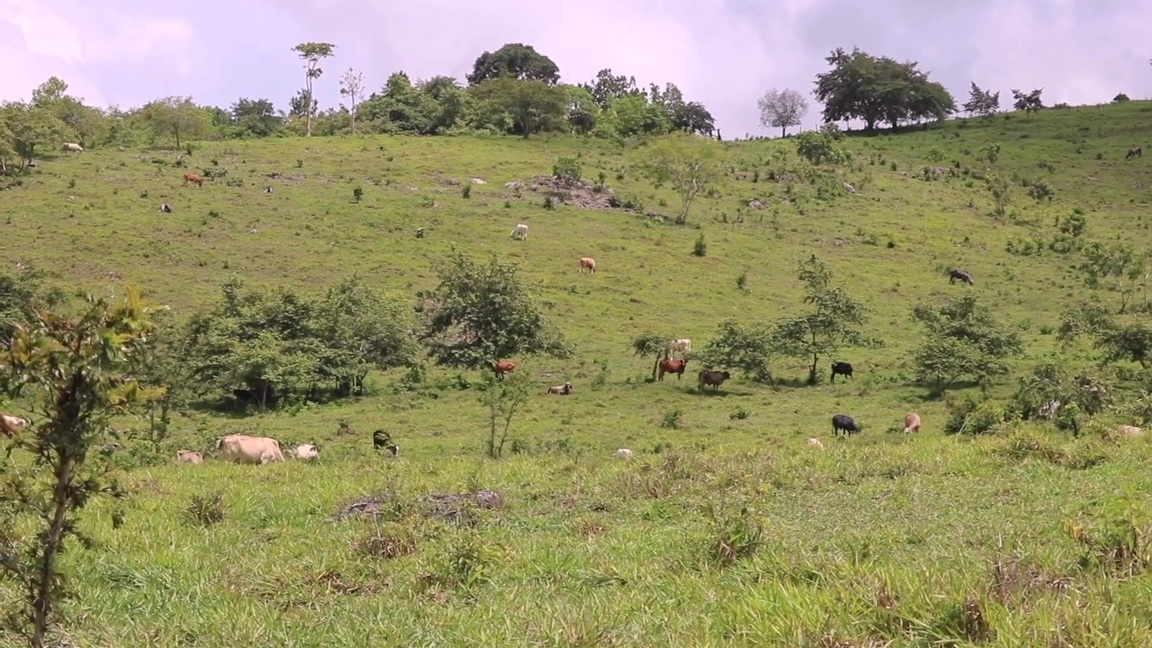Belize’s western forests are under attack, and the threat isn’t just environmental, it’s criminal. Illegal cattle ranching is creeping deeper into protected areas like the Vaca Forest Reserve and the Chiquibul ecosystem. Experts say it’s being driven by cross-border encroachment, organized crime, and a serious lack of enforcement on the ground. News Five’s Hipolito Novelo saw it firsthand in Chiquibul back in 2023. Now, he’s diving into a new report that lays out the scale and impact of this growing crisis. It’s a troubling look at how Belize’s natural treasures are being chipped away and what’s at stake if the trend continues.
A new report by Friends for Conservation and Development, or FCD, reveals that over three thousand five hundred acres of forest in the Vaca Forest Reserve and Chiquibul Ecosystem have already been cleared. The ranches cross Belize’s protected areas and many point fingers across the border.
Rafael Manzanero, Executive Director, FCD
“Although we have been collecting and doing monitoring and enforcement along with the Defense Force and the police in areas like Caballo, Valentin, Rio Blanco, and Cebada which are right along the border, the study that was done, the research concluded last year, 2024, the research shows that the Vaca Forest Reserve which is seventeen kilometers with Guatemalan there is approximately one thousand seven hundred acres being used by cattle ranchers.”
So that’s the Vaca Forest Reserve alone, in the Chiquibul ecosystem? The number is slightly greater.
“There is approximately one thousand nine hundred acres that we consider to be pasture lands used for cattle ranching. These are purely Guatemalans. So what it shows then is that cattle ranching has not been halted in that activity. It is crossing the adjacency zone of one kilometer. There are particular hotspot areas that we can clearly see. Valentine in the Caracol area is really one which is targeted, south of Caballo conservation post. Then we see the guys north of Rio Blanco.”
Rafael Manzanero
“There have been operations along with rangers and the BDF primarily along the area to cu the fences and removed the posts. I mean, that has happened and I have to thank the BDF over the more recent months that there has been a much more kind of a robust program to do that but there’s so much in terms of fields out there and fences. Some are so that Guatemalans, after two months, they will return back and put back in a fence. We have been highlighting scatter ranching, we still have not been that decisive in putting in the interventions to really have this – it has to be a multi-pronged approach also like many of these things. But, it shows that we still have to do a lot of work. It is rugged terrain. It is difficult to reach, it’s difficult to be out in that zone, you know, but that’s what it’s going to take if we really want to deal with this.”
Oscar Mira, Minister of Defense & Border Security
“The Prime Minister has also been very gracious in allowing us to access more funds to ensuring that we buy the equipment and that we have the training that the BDF and the Coast Guard deserves to do their work.”
More and better equipped and trained soldiers will be needed. That’s because the cattle ranching isn’t being done only by poor Guatemalans trying to survive. It is reportedly being orchestrated by Guatemalan drug lords- and its being called narco-cattle ranching.
“The study also is able to highlight that there could be nexus within the drug cartels also. We only can go in only to describe in terms of other references in the study that we did. We don’t have the pure research data that can show that because we are not into that kind of field. But only looking by what Guatemalans are seeing in on, on their, on their landscape on their areas like Laguna Tigre. I mean, Laguna Tigre still have, you know, thirty thousand heads of cattle right now, and that’s within the Mya Biosphere Reserve. They’re still also trying to tackle that problem. There yes, it’s directly nexus with drug lords. What they would tell us and what other references tell us, is that what you, once you see the trend, it is very possible that could also be the same here.”
The report also calls for advance research and policy development that would address the ecological and socio-economic impacts of illegal cattle ranching.
